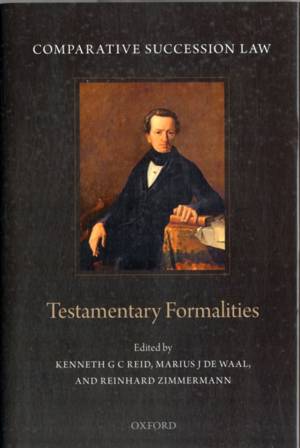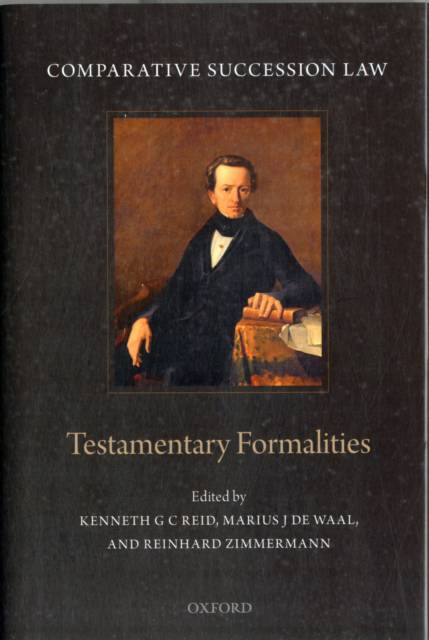
Je cadeautjes zeker op tijd in huis hebben voor de feestdagen? Kom langs in onze winkels en vind het perfecte geschenk!
- Afhalen na 1 uur in een winkel met voorraad
- Gratis thuislevering in België vanaf € 30
- Ruim aanbod met 7 miljoen producten
Je cadeautjes zeker op tijd in huis hebben voor de feestdagen? Kom langs in onze winkels en vind het perfecte geschenk!
- Afhalen na 1 uur in een winkel met voorraad
- Gratis thuislevering in België vanaf € 30
- Ruim aanbod met 7 miljoen producten
Zoeken
Comparative Succession Law
Volume I: Testamentary Formalities
Hardcover
€ 286,95
+ 573 punten
Omschrijving
Launching a major new research project examining the principles of succession law in comparative perspective, this volume analyses the formalities imposed by the law on making a will across a wide range of European and international jurisdictions.
Specificaties
Betrokkenen
- Uitgeverij:
Inhoud
- Aantal bladzijden:
- 524
Eigenschappen
- Productcode (EAN):
- 9780199696802
- Verschijningsdatum:
- 6/10/2011
- Uitvoering:
- Hardcover
- Afmetingen:
- 164 mm x 238 mm
- Gewicht:
- 934 g

Alleen bij Standaard Boekhandel
+ 573 punten op je klantenkaart van Standaard Boekhandel
Beoordelingen
We publiceren alleen reviews die voldoen aan de voorwaarden voor reviews. Bekijk onze voorwaarden voor reviews.








